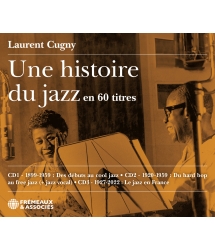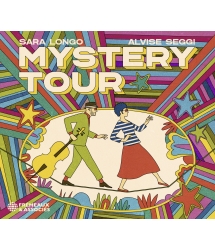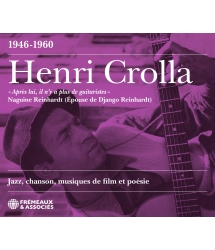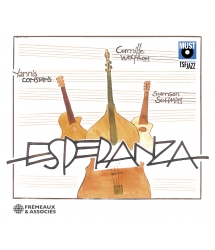- Our Catalog
- Philosophy
- Philosophers of the 20th century and today
- History of Philosophy (PUF)
- Counter-History and Brief Encyclopedia by Michel Onfray
- The philosophical work explained by Luc Ferry
- Ancient thought
- Thinkers of yesterday as seen by the philosophers of today
- Historical philosophical texts interpreted by great actors
- History
- Books (in French)
- Social science
- Historical words
- Audiobooks & Literature
- Our Catalog
- Jazz
- Blues
- Rock - Country - Cajun
- French song
- World music
- Africa
- France
- Québec / Canada
- Hawaï
- West Indies
- Caribbean
- Cuba & Afro-cubain
- Mexico
- South America
- Tango
- Brazil
- Tzigane / Gypsy
- Fado / Portugal
- Flamenco / Spain
- Yiddish / Israel
- China
- Tibet / Nepal
- Asia
- Indian Ocean / Madagascar
- Japan
- Indonesia
- Oceania
- India
- Bangladesh
- USSR / Communist songs
- World music / Miscellaneous
- Classical music
- Composers - Movie Soundtracks
- Sounds of nature
- Our Catalog
- Youth
- Philosophy
- News
- How to order ?
- Receive the catalog
- Manifesto
- Dictionnary











- Our Catalog
- Philosophy
- Philosophers of the 20th century and today
- History of Philosophy (PUF)
- Counter-History and Brief Encyclopedia by Michel Onfray
- The philosophical work explained by Luc Ferry
- Ancient thought
- Thinkers of yesterday as seen by the philosophers of today
- Historical philosophical texts interpreted by great actors
- History
- Books (in French)
- Social science
- Historical words
- Audiobooks & Literature
- Our Catalog
- Jazz
- Blues
- Rock - Country - Cajun
- French song
- World music
- Africa
- France
- Québec / Canada
- Hawaï
- West Indies
- Caribbean
- Cuba & Afro-cubain
- Mexico
- South America
- Tango
- Brazil
- Tzigane / Gypsy
- Fado / Portugal
- Flamenco / Spain
- Yiddish / Israel
- China
- Tibet / Nepal
- Asia
- Indian Ocean / Madagascar
- Japan
- Indonesia
- Oceania
- India
- Bangladesh
- USSR / Communist songs
- World music / Miscellaneous
- Classical music
- Composers - Movie Soundtracks
- Sounds of nature
- Our Catalog
- Youth
- Philosophy
- News
- How to order ?
- Receive the catalog
- Manifesto
- Dictionnary
1957-1962 - Soul Bossa Nova
Quincy Jones
Ref.: FA5857
Artistic Direction : OLIVIER JULIEN
Label : FREMEAUX & ASSOCIES
Total duration of the pack : 5 hours 2 minutes
Nbre. CD : 4
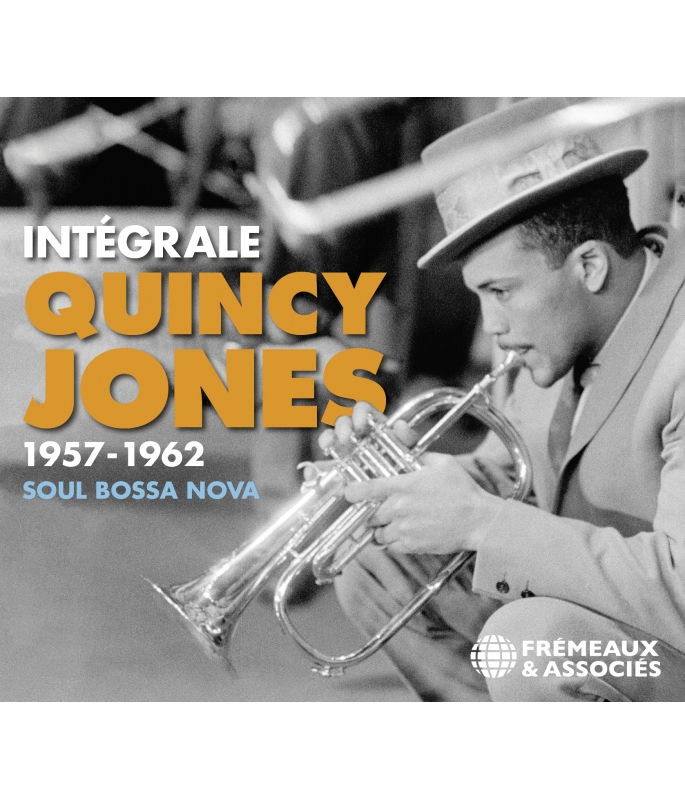
1957-1962 - Soul Bossa Nova
- - * * * * Le Soir
- - Sélection Noël - Le Monde
Quincy Jones counts as one of the greatest bandleaders, arrangers and trumpeters of the 20th century, a musician whose career has taken him from the world of jazz to popular music and films. Prepared by Olivier Julien, this set gives us the chance to rediscover Quincy Jones’s beginnings as a recording artist, from the early studio albums he made under his own name to his worldwide hit “Soul Bossa Nova”. This collection shows all the fervour brought to music by Quincy, a young arranger who in only a few years would become a superstar of pop.
Patrick Frémeaux
CD1 - THIS IS HOW I FEEL ABOUT JAZZ : WALKIN’ • A SLEEPIN’ BEE • SERMONETTE • STOCKHOLM SWEETNIN’ • EVENING IN PARIS • BOO’S BLUES. - GO WEST, MAN! : DANCIN’ PANTS • BLUES DAY • BRIGHT MOON • NO BONES AT ALL • THE OOM IS BLUES • BE MY GUEST • MEDLEY (WHAT’S NEW / WE’LL BE TOGETHER AGAIN / TIME ON MY HANDS / YOU GO TO MY HEAD / LAURA) • LONDON DERRIERE • KINGS ROAD BLUES.
CD2 - THE BIRTH OF A BAND : THE BIRTH OF A BAND • MOANIN’ • I REMEMBER CLIFFORD • ALONG CAME BETTY • TICKLE TOE • HAPPY FACE • WHISPER NOT • THE GYPSY • A CHANGE OF PACE • TUXEDO JUNCTION. - THE GREAT WIDE WORLD OF QUINCY JONES : LESTER LEAPS IN • GHANA • CARAVAN • EVERYBODY’S BLUES • CHEROKEE (INDIAN LOVE SONG) • AIR MAIL SPECIAL • THEY SAY IT’S WONDERFUL • CHANT OF THE WEED • I NEVER HAS SEEN SNOW • EESOM.
CD3 - I DIG DANCERS : PLEASURING PLUMP • G’WAN TRAIN • MOONGLOW • TONE POEM • YOU TURNED THE TABLES ON ME • CHINESE CHECKERS • LOVE IS HERE TO STAY • THE MIDNIGHT SUN WILL NEVER SET • TROUBLE ON MY MIND • A SUNDAY KIND OF LOVE. - AROUND THE WORLD : HOT SAKE • STRIKE UP THE BAND • AFRICANA • MEADOWLANDS • RICO VACILON • UNDER THE PARIS SKIES • MACK THE KNIFE • MANOLETE DE ESPANA • BAIA • COME BACK TO SORRENTO • SWEDISH WARMLAND. BONUS TRACKS : - QUINCY JONES SWEDISH-AMERICAN ALLSTARS : POGO STICK • LIZA.
CD4 - QUINTESSENCE : THE QUINTESSENCE • ROBOT PORTRAIT • LITTLE KAREN • STRAIGHT, NO CHASER • FOR LENA AND LENNIE • HARD SOCK DANCE • INVITATION • THE TWITCH. - BIG BAND BOSSA NOVA : SOUL BOSSA NOVA • BOOGIE BOSSA NOVA • DESAFINADO • BLACK ORPHEUS (MANHA DE CARNAVAL) • SE E TARDE ME PARDOA (FORGIVE ME IF I’M LATE) • ON THE STREET WHERE YOU LIVE • SAMBA DE UNA NOTA SO (ONE NOTE SAMBA) • LALO BOSSA NOVA • SERENATA • CHEGA DE SAUDADE (NO MORE BLUES). BONUS TRACKS : - QUINCY JONES SWEDISH-AMERICAN ALLSTARS : JONE’S BONES • SOMETIMES I’M HAPPY.
DIRECTION ARTISTIQUE : OLIVIER JULIEN
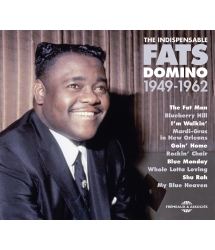
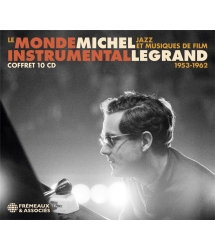
JAZZ ET MUSIQUES DE FILM 1953-1962
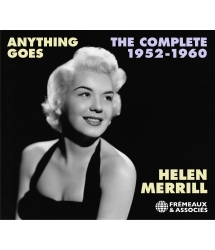
Helen Merrill 1952-1960
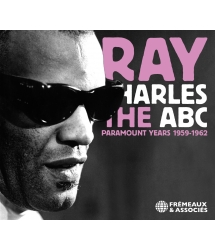
1959-1962




-
PisteTitleMain artistAutorDurationRegistered in
-
1WalkinQuincy JonesRichard Carpentier00:10:421957
-
2A Sleepin BeeQuincy JonesArlen Harold00:04:401957
-
3SermonetteQuincy JonesJulian Adderley00:05:561957
-
4Stockholm SweetninQuincy JonesQuincy Jones00:05:401957
-
5Evening in ParisQuincy JonesQuincy Jones00:04:071957
-
6Boo’s BluesQuincy JonesQuincy Jones00:05:121957
-
7Dancin PantsQuincy JonesJimmy Giuffre00:03:471957
-
8Blues DayQuincy JonesJimmy Giuffre00:04:411957
-
9Bright MoonQuincy JonesJimmy Giuffre00:05:181957
-
10No Bones at AllQuincy JonesJohnny Mandel00:03:561957
-
11The Oom is BluesQuincy JonesCharlie Mariano00:05:071957
-
12Be my GuestQuincy JonesLennie Niehaus00:04:281957
-
13Medley : What’s New / We’ll be together againQuincy JonesBob Haggart00:06:181957
-
14London DerriereQuincy JonesJohnny Mandel00:04:041957
-
15Kings Road BluesQuincy JonesLennie Niehaus00:05:021957
-
PisteTitleMain artistAutorDurationRegistered in
-
1The Birth of a BandQuincy JonesQuincy Jones00:02:571959
-
2MoaninQuincy JonesQuincy Jones00:03:061959
-
3I Remember CliffordQuincy JonesBenny Golson00:03:441959
-
4Along Came BettyQuincy JonesBenny Golson00:03:191959
-
5Tickle ToeQuincy JonesLester Young00:02:591959
-
6Happy FaceQuincy JonesSonny Stitt00:02:411959
-
7Whisper NotQuincy JonesBenny Golson00:03:241959
-
8The GypsyQuincy JonesBilly Reid00:04:051959
-
9A Change of PaceQuincy JonesHarry Arnold00:03:221959
-
10Tuxedo JunctionQuincy JonesBuddy Feine00:02:441959
-
11Lester Leaps InQuincy JonesLester Young00:03:351959
-
12GhanaQuincy JonesErnest Wilkins00:04:381959
-
13CaravanQuincy JonesDuke Ellington00:03:301959
-
14Everybody’s bluesQuincy JonesErnest Wilkins00:04:151959
-
15Cherokee (Indian Love Song)Quincy JonesRay Noble00:03:101959
-
16Air Mail SpecialQuincy JonesBenny Goodman00:02:341959
-
17They Say it’s WonderfulQuincy Jonesirving Berlin00:03:231959
-
18Chant of the WeedQuincy JonesDon Redman00:03:141959
-
19I Never has Seen SnowQuincy JonesArlen Harold00:05:061959
-
20EesomQuincy JonesArlen Harold00:05:061959
-
PisteTitleMain artistAutorDurationRegistered in
-
1Pleasuring PlumpQuincy JonesQuincy Jones00:02:161960
-
2G Wan TrainQuincy Jonespatti Brown00:06:201960
-
3MoonglowQuincy JonesWill Hudson00:02:471960
-
4Tone PoemQuincy JonesMelba Liston00:03:381960
-
5You Turned the Tables on MeQuincy JonesLouis Alter00:02:301960
-
6Chinese CheckersQuincy JonesDavid Carr Glover00:02:401960
-
7Love Is Here to StayQuincy JonesGeorge & Ira Gershwin00:03:111960
-
8The Midnight Sun Will Never SetQuincy JonesQuincy Jones00:04:331960
-
9Trouble on My MindQuincy JonesRay Noble00:02:301960
-
10A Sunday Kind of LoveQuincy JonesLouis Prima00:02:341960
-
11Hot SakeQuincy JonesQuincy Jones00:03:001961
-
12Strike up the BandQuincy JonesGeorge & Ira Gershwin00:02:271961
-
13AfricanaQuincy JonesQuincy Jones00:03:101961
-
14MeadowlandsQuincy JonesQuincy Jones00:03:101961
-
15Rico VacilonQuincy JonesRosendo Ruiz Jr00:02:151961
-
16Under the Paris SkiesQuincy JonesHubert Giraud00:02:331961
-
17Mack the KnifeQuincy JonesBertold Brecht00:02:321961
-
18Manolete de EspanaQuincy JonesQuincy Jones00:03:181961
-
19BaiaQuincy JonesAry Barroso00:03:551961
-
20Come Back to SorrentoQuincy JonesErnesto de Curtis00:02:291961
-
21Swedish WarmlandQuincy JonesQuincy Jones00:04:011961
-
22Pogo StickQuincy JonesQuincy Jones00:06:171953
-
23LizaQuincy JonesGeorge & Ira Gershwin00:05:351953
-
PisteTitleMain artistAutorDurationRegistered in
-
1The QuintessenceQuincy JonesQuincy Jones00:04:201962
-
2Robot PortraitQuincy JonesBilly Byers00:05:251962
-
3Little KarenQuincy JonesBenny Golson00:03:431962
-
4Straight no ChaserQuincy JonesThelonious Monk00:02:251962
-
5For Lena and LennieQuincy JonesQuincy Jones00:04:171962
-
6Hard Sock DanceQuincy JonesQuincy Jones00:03:191962
-
7InvitationQuincy JonesKasper Brinnislav00:03:341962
-
8The TwitchQuincy JonesBilly Byers00:03:491962
-
9Soul Bossa NovaQuincy JonesQuincy Jones00:02:451962
-
10Boogie Bossa NovaQuincy JonesCharles Mingus00:02:411962
-
11DesafinadoQuincy JonesAntonio Carlos Jobim00:02:531962
-
12Black Orpheus (Manha de Carnaval)Quincy JonesLuiz Bonfa00:02:541962
-
13Se E Tarde Me Pardoa (Forgive Me if I’m Late)Quincy JonesCarlos Lyra00:04:221962
-
14On the Street Where You LiveQuincy JonesJay Lerner00:02:331962
-
15Samba De Una Nota So (One Note Samba)Quincy JonesAntonio Carlos Jobim00:02:011962
-
16Lalo Bossa NovaQuincy JonesLalo Schifrin00:03:121962
-
17SerenataQuincy JonesLeroy Anderson00:03:181962
-
18Chega de Saudade (No More Blues)Quincy JonesAntonio Carlos Jobim00:05:311962
-
19Jone’s BonesQuincy JonesQuincy Jones00:05:411953
-
20Sometimes I’m HappyQuincy JonesVincent Youmans00:05:491953
Complete
INTÉGRALE
QUINCY
J ONES
1957-1962
SOUL BOSSA NOVA
Quincy Jones compte parmi les plus formidables conducteurs d’orchestres, arrangeurs et trompettistes du XXe siècle. Sa carrière l’a mené du jazz à la pop en passant par la musique de film. Réalisé par Olivier Julien, ce coffret permet de redécouvrir les débuts discographiques de Quincy Jones, à travers les albums studio qu’il a signé sous son nom et remonte jusqu’à son premier tube planétaire « Soul Bossa Nova ». Il témoigne de toute la ferveur du jeune orchestrateur, qui deviendra en quelques années la figure légendaire de la pop. Patrick Frémeaux
Quincy Jones counts as one of the greatest bandleaders, arrangers and trumpeters of the 20th century, a musician whose career has taken him from the world of jazz to popular music and films. Prepared by Olivier Julien, this set gives us the chance to rediscover Quincy Jones’s beginnings as a recording artist, from the early studio albums he made under his own name to his worldwide hit “Soul Bossa Nova”. This collection shows all the fervour brought to music by Quincy, a young arranger who in only a few years would become a superstar of pop.
Patrick Frémeaux
« “Dans mon premier quintet, on avait inventé, comme dans tous les groupes, des amendes,
pour retard, pour fausse note, etc. Nous, c’était 20 cents pour manque d’attitude cool en scène.”
Instrumentiste, compositeur ou arrangeur ?
“Arrangeur, cet art sophistiqué, mal payé quand j’étais jeune, fou et peu connu.”
De tous les orchestrateurs d’avant les logiciels, Quincy Jones, sans forcer la note, est l’Yves Saint Laurent. »
Interview de Quincy Jones par Francis Marmande, Le Monde 14 juillet 2008
CD1
- This Is How I Feel About Jazz
01 - Walkin’ 10’42
02 - A Sleepin’ Bee 4’40
03 - Sermonette 5’56
04 - Stockholm Sweetnin’ 5’40
05 - Evening in Paris 4’07
06 - Boo’s Blues 5’12
- Go West, Man!
07 - Dancin’ Pants 3’47
08 - Blues Day 4’41
09 - Bright Moon 5’18
10 - No Bones at All 3’56
11 - The Oom is Blues 5’07
12 - Be my Guest 4’28
13 - Medley (What’s New / We’ll Be Together Again / Time on My Hands / You Go to My Head / Laura) 6’18
14 - London Derriere 4’04
15 - Kings Road Blues 5’02
CD2
- The Birth of a Band
01 - The Birth of a Band 2’57
02 - Moanin’ 3’06
03 - I Remember Clifford 3’44
04 - Along Came Betty 3’19
05 - Tickle Toe 2’59
06 - Happy Face 2’41
07 - Whisper Not 3’24
08 - The Gypsy 4’05
09 - A Change of Pace 3’22
10 - Tuxedo Junction 2’44
- The Great Wide World
of Quincy Jones
11 - Lester Leaps in 3’35
12 - Ghana 4’38
13 - Caravan 3’30
14 - Everybody’s Blues 4’15
15 - Cherokee (Indian love song) 3’10
16 - Air Mail Special 2’34
17 - They Say it’s Wonderful 3’23
18 - Chant of the Weed 3’14
19 - I Never Has Seen Snow 5’06
20 - Eesom 5’06
CD3
- I Dig Dancers
01 - Pleasuring Plump 2’16
02 - G’wan Train 6’20
03 - Moonglow 2’47
04 - Tone Poem 3’38
05 - You Turned the Tables on Me 2’30
06 - Chinese Checkers 2’40
07 - Love Is Here to Stay 3’11
08 - The Midnight Sun Will Never Set 4’33
09 - Trouble on My Mind 2’30
10 - A Sunday kind of Love 2’34
- Around the World
11 - Hot Sake 3’00
12 - Strike Up the Band 2’27
13 - Africana 3’10
14 - Meadowlands 3’10
15 - Rico Vacilon 2’15
16 - Under the Paris Skies 2’33
17 - Mack the Knife 2’32
18 - Manolete de Espana 3’18
19 - Baia 3’55
20 - Come Back to Sorrento 2’29
21 - Swedish Warmland 4’01
Bonus tracks :
- Quincy Jones Swedish-American Allstars
22 - Pogo Stick 6’17
23 – Liza 5’35
CD4
- Quintessence
01 - The Quintessence 4’20
02 - Robot Portrait 5’25
03 - Little Karen 3’43
04 - Straight, No Chaser 2’25
05 - For Lena and Lennie 4’17
06 - Hard Sock Dance 3’19
07 - Invitation 3’34
08 - The Twitch 3’49
- Big Band Bossa Nova
09 - Soul Bossa Nova 2’45
10 - Boogie Bossa Nova 2’41
11 - Desafinado 2’53
12 - Black Orpheus (Manha De Carnaval) 2’54
13 - Se E Tarde Me Pardoa (Forgive Me if I’m Late) 4’22
14 - On the Street Where you Live 2’33
15 - Samba De Una Nota So (One Note Samba) 2’01
16 - Lalo Bossa Nova 3’12
17 - Serenata 3’18
18 - Chega De Saudade (No More Blues) 5’31
Bonus tracks :
- Quincy Jones Swedish-American Allstars
19 - Jone’s Bones 5’41
20 - Sometimes I’m Happy 5’49
Intégrale Quincy Jones
1957-1962
Soul Bossa Nova
Par Olivier Julien
Quincy Jones, surnommé « Q » est une légende vivante qui a multiplié les collaborations artistiques à travers le monde. Il est plus connu pour son travail avec Michael Jackson avec qui il a collaboré aux albums de la consécration et pour qui il a produit l’album de tous les records Thriller sorti en 1982 qui reste à ce jour la meilleure vente de tous les temps dans l’histoire du disque. Malgré une étiquette de jazzman, il a collaboré avec un nombre incroyable d’artistes tels que Barbra Streisand ou Nana Mouskouri en passant par Jacques Brel et Frank Sinatra. Artiste touche à tout, il a déployé son talent tant dans le jazz que la variété en passant par la musique de films et a collaboré avec le cinéma et la télévision, à la fois adepte du Big band et capable de productions plus intimistes. Ce coffret permet de redécouvrir les débuts discographiques de Quincy Jones à travers les albums studio qu’il a signé sous son nom et qui forment la pierre angulaire d’une carrière qui le verra notamment nommé quatre-vingt fois aux Grammy Awards où il sera consacré vingt-huit fois.
Quincy Delight Jones Jr est né le 14 mars 1933 à Chicago dans l’Illinois où ses parents ont déménagé lors de la « grande migration ». Quincy Jones Jr y vit son éveil musical tout d’abord grâce à ses voisins qui possèdent un piano, puis c’est à l’école qu’il apprend la pratique de la trompette. Son père Quincy Delight est charpentier et joueur de basket-ball semi professionnel et sa mère Sarah Wells Jones employée de banque, est rapidement internée suite à des troubles psychiatriques. La grand-mère paternelle de Quincy était la fille d’esclaves à Louisville dans le Kentucky. Les parents divorcent et de déménagements en déménagements, son père s’installe après-guerre dans la banlieue de Seattle à Bremerton dans l’État de Washington, il se remarie à Elvera Jones, mère de trois enfants et auront trois enfants ensemble. Lors d’un passage de l’orchestre de Count Basie à Seattle, il prend des cours à l’âge de treize ans avec Clark Terry. Face à la pauvreté de son père, Quincy exerce l’activité de cireur de chaussures tout en commençant à jouer dans des groupes locaux. Il fait la connaissance de Ray Charles, de trois ans son aîné, et forment ensemble un combo qui se produit dans les clubs de la ville avant d’obtenir à dix-huit ans une bourse qui lui permet de suivre l’enseignement du Berklee College of Music de Boston. Il intègre ensuite l’orchestre de Lionel Hampton comme trompettiste et arrangeur pour une durée de quatre ans ce qui lui permet de faire une tournée en Europe et lui ouvrira les yeux sur la question du racisme. C’est pendant cette tournée, en 1953, que Quincy Jones enregistre et sort en Suède ses premiers disques sous la forme de deux singles : Quincy Jones and the swedish-american all stars : Pogo stick (Quincy Jones), Liza (Gershwin) (45 tours 17 cm Metronome MEP 30) et Jone’s bones (Quincy Jones), Sometimes I’m happy (Vincent Youmans - Irving Cassar) (45 tours 17 cm Metronome MEP 31). Ces enregistrements sortiront l’année suivante sous forme de deux simples en Grande-Bretagne (Esquire EP-5 et Esquire EP-20) et sous la forme d’un 33 tours 25 cm aux États-Unis (Prestige – PrLP 172). L’orchestre est composé de Art Farmer à la trompette, Alan Dawson à la batterie, Lars Gullin au saxophone bariton, Bengt Hallberg au piano, Ake Persson au trombone, Arne Domnérus au saxophone alto, Simon Brehm à la basse et Jimmy Cleveland au trombone.
Quincy s’installe ensuite à New York où il réalise des arrangements pour Tommy Dorsey, Gene Krupa, Sarah Vaughan, Count Basie, Dinah Washington, Cannonball Adderley et bien sûr Ray Charles. Début 1956, il accepte un « travail temporaire » pour le CBS stage show de Jimmy et Tommy Dorsey, il y accompagne en tant que deuxième trompette Elvis Presley, tout juste âgé de vingt-cinq ans. Plus tard en 1956, il est engagé par Dizzy Gillespie comme trompettiste et directeur musical de son Big band pour une tournée organisée par le Département d’État au Moyen-Orient et en Amérique du Sud. Pendant cette tournée, il fait la connaissance du musicien Lalo Schifrin. Peu après, il enregistre son premier disque américain qui sort en 1957 This is how I feel about jazz : Walkin’ (Richard Carpenter), A sleepin’ bee (Harold Arlen / Truman Capote), Sermonette (Julian Adderley), Stockholm sweetnin’ (Quincy Jones), Evening in Paris (Quincy Jones) et Boo’s blues (Quincy Jones) (ABC Paramount ABC 159) L’orchestre est notamment composé de Charles Mingus à la basse, Phil Woods au saxophone alto, Billy Taylor au piano, Zoot Sims au saxophone ténor, Jimmy Cleveland au trombone et Art Farmer à la trompette. Son deuxième album sort également en 1957 : Go west, man! : Dancin’ pants (Jimmy Giuffre), Blues day (Jimmy Giuffre), Bright moon (Jimmy Giuffre), No bones at all (Johnny Mandel), The oom is blues (Charlie Mariano), Be my guest (Lennie Niehaus), Medley : What’s new (Bob Haggart / Johnny Burke), We’ll be together again (Carl Fischer / Frankie Laine), Time on my hands (Harold Adamson / Mack Gordon / Vincent Youmans), You go to my head (Haven Gillepsie / J.Fred Coots), Laura (David Raksin / Johnny Mercer), London derriere (Johnny Mandel) et King road blues (Lennie Niehaus). En 1957, Quincy s’installe à Paris où il étudie auprès de Nadia Boulanger, directrice du Conservatoire américain de Fontainebleau, et travaille comme arrangeur pour le label d’Eddie Barclay pour des artistes tels que Henri Salvador, Charles Aznavour ou Jacques Brel entre autres. Le groupe Les Double Six enregistre un album consacré à ses compositions. Le temps d’une tournée européenne, il est le directeur de la troupe qui joue la comédie musicale Free and easy d’Harold Arlen. Il forme un Big band avec dix-huit musiciens mais malgré la qualité musicale de l’orchestre, l’expérience se solde par un fiasco financier et pousse Quincy Jones, homme pourtant foncièrement optimiste, au bord de la dépression. Il rebondit vite en retournant aux États-Unis où il devient directeur artistique pour le label Mercury avant de devenir vice-président du label. Il signe un nouvel album The birth of a band : The birth of a band (Quincy Jones), Moanin’ (Bob Timmons), I remember Clifford (Benny Golson), Along came Betty (Benny Golson), Tickle toe (Lester Young), Happy face (Sonny Stitt), Whisper not (Benny Golson), The gypsy (Billy Reid), A change of pace (Harry Arnold / Quincy Jones), Tuxedo junction (Buddy Feine / Erskine Hawkins / Julian Dash / William Johnson) (33 tours 30 cm Mercury MG 20444 - USA – 1959) suivi par The great wide world of Quincy Jones qui reflète ses influences internationales : Lester leaps in (Lester Young), Ghana (Ernest Wilkins), Caravan (Duke Ellington / Irving Mills / Juan Tizol), Everybody’s blues (Ernest Wilkins), Cherokee (Indian love song) (Ray Noble), Air mail special (Benny Goodman / Charlie Christian / Jimmie Mundy), They say it’s wonderful (Irving Berlin), Chant of the weed (Don Redman), I never has seen snow (Harold Arlen / Truman Capote), Eesom (Bill Potts) (33 tours 30 cm Mercury SR 60221 - USA – 1959). Sa position au niveau du label lui permet de multiplier les sorties discographiques et un nouvel album voit le jour en 1960 - I dig dancers : Pleasuring plump (Quincy Jones), G’wan train (Patti Brown), Moonglow (Will Hudson / Irving Mills / Eddie DeLange), Tone poem (Melba Liston), You turned the tables on me (Lois Alter / Sidneu D.Mitchell), Chinese Checkers (David Carr Glover), Love is here to stay (Ira Gershwin / George Gershwin), The Midnight sun will never set (Quincy Jones / Henri Salvador / Dorcas Cochran), Trouble on my mind (Ray Noble), A sunday kind of love ( Luis Prima / Barbara Belle / Anita Leonard / Stan Rhodes) (33 tours 30 cm Mercury SR 60612 - USA – 1960). Nouveau tour du monde avec en 1961 sous le nom Quincy Jones & band, l’album Around the world : Hot sake (Quincy Jones), Strike up the band (Ira Gershwin / George Gershwin), Africana (Quincy Jones), Meadowlands (Quincy Jones), Rico Vacilon (Rosendo Ruiz Jr), Under the Paris skies (Hubert Giraud / Jean Dréjac), Mack the knife (Bertolt Brecht / Kurt Weill), Manolete de Espana (Quincy Jones), Baia (Ary Barroso), Come back to Sorrento (Ernesto de Curtis / Giambattista de Curtis), Swedish Warmland (Quincy Jones) (33 tours 30 cm Mercury PPS 6014 - USA – 1961). En 1961, il arrange et dirige l’album If you go de Peggy Lee pour le label Capitol Records. Il participe au prestigieux festival de Newport et sort son premier album en public : Quincy Jones And His Orchestra : Live At Newport 1961. En 1962, c’est sous le label Impulse ! Que sort le nouvel album intitulé the quintessence : The quintessence (Quincy Jones), Robot portrait (Billy Byers), Little Karen (Benny Golson), Straight, no chaser (Thelonious Monk), For Lena and Lennie (Quincy Jones), Hard sock dance (Quincy Jones), Invitation (Bronislaw Kasper / Paul Francis Webster), The twitch (Billy Byers) (33 tours 30 cm Impulse ! A-11 - USA). Cette même année, il sort chez Mercury son « album brésilien » : Big band bossa nova : Soul bossa nova (Quincy Jones), Boogie bossa nova (Charlie Mingus), Desafinado (Antonio Carlos Jobim / Newton Medonça), Black orpheus (Manha de carnaval) (Luiz Bonfa), Se e tarde me pardoa (Forgive me if i’m late) (Carlos Lyra / Ronaldo Boscoli), On the street where you live (Lerner & Loewe), Samba de una nota so (One note samba) (Antonio Carlos Jobim), Lalo bossa nova (Lalo Schifrin), Serenata (Leroy Anderson), Chega de saudade (No more blues) (Antonio Carlos Jobim / Vinicius De Moraes) (33 tours 30 cm Mercury SR 60751 - USA – 1962). L’album rencontre un vif succès et le morceau : Soul bossa nova connaîtra plusieurs carrières en apparaissant notamment en 1964 dans le film de Sidney Lumet The pawnbroker et deviendra le générique du film Austin Powers samplé par Ludacris ; il inspirera également Nino Ferrer en 1969 pour son titre désormais classique : Les cornichons. La bande originale de The pawnbroker lui amène de nombreux projets pour le cinéma et la télévision pour laquelle il signe entre autres le générique de L’homme de fer (The iron man) et du Bill Cosby show. Quincy Jones s’engage auprès de Martin Luther King et du révérend Jesse Jackson pour les droits des noirs américains et finance l’IBAM (Institute for black american music). Il diversifie ses activités et devient producteur pour la télévision, il coproduit notamment en 1973 un show consacré à Duke Ellington. Coté carrière personnelle, Quincy s’éloigne du jazz et sort des albums qui flirtent avec le funk et la pop musique. En 1974, il est victime d’une rupture d’anévrisme et après six mois de convalescence, prend part comme directeur musical à l’aventure du film The Wiz produit par la Motown, il y rencontre le jeune Michael Jackson qui souhaite s’émanciper des Jacksons Five et est à la recherche d’un nouveau producteur. C’est pour le label Epic que débute leur collaboration en 1979 avec l’album Off the wall qui offre une seconde carrière à Michael Jackson. L’album suivant en 1982 Thriller battra tous les records vente existants avec plus de soixante millions d’exemplaires vendus ce qui permettra à Jackson d’acquérir une gloire internationale. Le succès de ce disque permet à Quincy Jones, toujours actif dans les mouvements anti racistes, de coproduire en 1985, le film de Steven Spielberg La couleur pourpre (The Color Purple) dont il signe la musique. Cette même année il prend part comme directeur artistique au projet du disque événement We Are the World au profit de la lutte contre la famine en Éthiopie qui autour de Michael Jackson réunit la fine fleur des artistes internationaux tels que Tina Turner, Bob Dylan, Ray Charles, Stevie Wonder et Bruce Springsteen parmi d’autres. Quincy Jones renoue avec le jazz en persuadant Miles Davis de de remonter sur scène en 1991, il dirige l’orchestre au Festival de Montreux et l’album Miles & Quincy live at Montreux sera le dernier enregistrement de Miles Davis qui meurt sept mois après. Il reçoit le Grammy Legend Award en 1992 (seules quinze personnes l’ont reçu à ce jour). En 1993, Quincy Jones fonde avec David Salzman la société de production QDE (Quincy Jones/David Salzman Entertainment), ils organisent alors le concert d’investiture de Bill Clinton et multiplient les activités avec aussi bien la production de musique, de pièces de théâtre, de films et d’émissions télévisées. En 2001, Quincy Jones publie son autobiographie Q: The Autobiography of Quincy Jones et sera fait commandeur de la légion d’honneur par Jacques Chirac. En 2007, il s’allie à Wizzard medias pour produire une série de podcast dans laquelle Quincy aborde les différents aspects de son métier. En 2013, il reçoit l’award Ahmet Ertegun qui consacre son entrée au Rock & Roll Hall of Fame. En 2017, il lance le premier service de vidéos à la demande consacré au « jazz et à la musique éclectique du monde entier. » Quincy Jones, après plus de soixante-dix ans de carrière reste actif dans le milieu de la musique et est une légende vivante du métier, il est une référence inter‑nationale tant dans le milieu du jazz que de la musique pop.
Olivier Julien
© Frémeaux & Associés 2023
Quincy Jones 1957-1962
by Olivier Julien
Quincy Jones, known as Q, is a living legend thanks to his multiple artistic collaborations around the world, a man best known for his success in association with Michael Jackson. The latter’s records made Quincy a household name, and the album that Quincy produced for him in 1982, Thriller, still remains the best-selling record in history. Despite being labelled a jazzman, Quincy has produced an incredible number of artists, a list that includes Barbra Streisand, Nana Mouskouri, Jacques Brel and Frank Sinatra. As an artist who could turn his hand to anything, Quincy Jones has exercised his talents in jazz, popular music, soundtracks, television and films, not to mention leading different big bands or his gift for more intimate productions. This set allows listeners to rediscover Quincy’s early days when he first made studio albums under his own name before moving into a career that would see him receive no fewer than 80 nominations at the Grammy Awards, and be consecrated by an astonishing 28 trophies.
Quincy Delight Jones Jr. was born on 14 March 1933 in Chicago, Illinois, where his parents had chosen to settle after the Great Migration, and his introduction to music came first from neighbours who owned a piano, and then at school, where he learned to play trumpet. His father Quincy Sr. was a carpenter who played basketball semi-professionally; Quincy Jr.’s mother, Sarah Wells, worked in a bank but was soon interned with a psychiatric disorder. Quincy’s paternal grandmother was the daughter of slaves in Louisville, Kentucky. After his parents’ divorce and several changes of home, his father moved after the war to live in the Seattle suburb of Bremerton in the state of Washington, where he was remarried to Elvera Jones, a mother of three, with whom the family would have another three children. The Count Basie Orchestra came to Seattle when Q was 13 and the young man took trumpet lessons from Clark Terry. His father was poor, and Quincy took a job shining shoes, while also playing trumpet in local bands. He met Ray Charles, his elder by three years, and together they formed a combo that played in the city’s clubs until Quincy obtained a scholarship to Boston’s Berklee College of Music. He next joined Lionel Hampton’s band as his new trumpeter/arranger, and stayed for four years, which allowed him to tour Europe and opened his eyes to the issue of racism. It was during this tour in 1953 that Quincy Jones recorded in Sweden, where he released his first records under the name “Quincy Jones and the Swedish-American All Stars”: two singles entitled Pogo Stick (Quincy Jones) b/w Liza (Gershwin), a 45rpm 7” Metronome MEP 30, and Jone’s Bones (Quincy Jones), b/w Sometimes I’m happy (Vincent Youmans/Irving Cassar), a 45rpm 7” Metronome MEP 31. The records would be released In Britain the following year as two Esquire singles (EP-5 and EP-20), and in the USA as a 10” LP (Prestige - PrLP 172). His “All-Stars” were Art Farmer (trumpet), Alan Dawson (drums), Lars Gullin (baritone sax), Bengt Hallberg (piano), Ake Persson (trombone), Arne Domnérus (alto saxophone), Simon Brehm (bass) and a second trombonist, Jimmy Cleveland.
Quincy then settled in New York where he wrote arrangements for Tommy Dorsey, Gene Krupa, Sarah Vaughan, Count Basie, Dinah Washington, Cannonball Adderley and, of course, Ray Charles. In early 1956, he took a “temporary job” with the CBS stage show of Jimmy and Tommy Dorsey, where he played second trumpet accompanying a certain Elvis Presley, then aged 25. He was hired by Dizzy Gillespie later that year to play trumpet and be musical director for Dizzy’s big band during a State Department tour taking in the Middle East and South America, a visit during which he met the Argentinean composer/arranger Lalo Schifrin.
Next came Quincy Jones’s first American recording, released in 1957 and entitled This is how I feel about jazz. The album was for ABC Paramount (ABC 159) with the titles Walkin’ (Richard Carpenter), A sleepin’ bee (Harold Arlen / Truman Capote), Sermonette (Julian Adderley), Stockholm sweetnin’ (Quincy Jones), Evening in Paris (Quincy Jones) and Boo’s blues (Quincy Jones), played by a prestige line-up: Charles Mingus on bass, Phil Woods on alto, pianist Billy Taylor, the tenor Zoot Sims, trombonist Jimmy Cleveland and Art Farmer playing trumpet.
The same year saw the release of a second album, Go West, Man! which contained Dancin’ pants (Jimmy Giuffre), Blues day (Jimmy Giuffre), Bright moon (Jimmy Giuffre), No bones at all (Johnny Mandel), The Oom is blues (Charlie Mariano), Be my guest (Lennie Niehaus), and a medley made up of What’s new (Bob Haggart / Johnny Burke), We’ll be together again (Carl Fischer / Frankie Laine), Time on my hands (Harold Adamson / Mack Gordon / Vincent Youmans), You go to my head (Haven Gillepsie / J.Fred Coots), Laura (David Raksin / Johnny Mercer), London derriere (Johnny Mandel) and the Lennie Niehaus tune King road blues.
1957 was a landmark year because Quincy went to Paris and settled in France. He studied under Nadia Boulanger, a gifted French teacher and conductor, at the American Conservatoire in Fontainebleau, and began working on arrangements for the label owned by French pianist and entrepreneur Eddie Barclay, whose stable of artists included such names as Henri Salvador, Charles Aznavour and Jacques Brel. The vocal jazz group known as the Double Six would also record an album devoted to Quincy’s compositions. There was a European tour for which Quincy headed a troupe that staged Harold Arlen’s musical Free and Easy. He then set up a big band (a line-up of eighteen musicians) but despite the qualities of the musicians the experiment was a financial disaster and Quincy, usually a great optimist, suffered from depression. He did get over it quickly however, and moved back to the USA to become A&R director of Mercury before being promoted to company Vice-President.
His next album The birth of a band (named after a Quincy title on the record) contained Moanin’ (Bob Timmons), I remember Clifford (Benny Golson), Along came Betty (Benny Golson), Tickle toe (Lester Young), Happy face (Sonny Stitt), Whisper not (Benny Golson), The gypsy (Billy Reid), A change of pace (Harry Arnold / Quincy Jones), Tuxedo junction (Buddy Feine / Erskine Hawkins / Julian Dash / William Johnson), a 33rpm 12” for Mercury (MG 20444) released in 1959. It was followed by The great wide world of Quincy Jones which reflected Quincy’s international influences, with Lester leaps in (Lester Young), Ghana (Ernest Wilkins), Caravan (Duke Ellington / Irving Mills / Juan Tizol), Everybody’s blues (Ernest Wilkins), Cherokee (Indian love song) by Ray Noble, Air mail special (Benny Goodman / Charlie Christian / Jimmie Mundy), They say it’s wonderful (Irving Berlin), Chant of the weed (Don Redman), I never has seen snow (Harold Arlen / Truman Capote), and Eesom (Bill Potts). This was released in 1959 as a 33rpm 12” for Mercury (SR 60221). Being the head of a record label gave Quincy certain privileges and he was often in the studios. 1960 saw the release of I dig dancers, with the titles Pleasuring plump (Quincy Jones), G’wan train (Patti Brown), Moonglow (Will Hudson / Irving Mills / Eddie DeLange), Tone poem (Melba Liston), You turned the tables on me (Lois Alter / Sidneu D.Mitchell), Chinese Checkers (David Carr Glover), Love is here to stay (Ira Gershwin / George Gershwin), The Midnight sun will never set (Quincy Jones / Henri Salvador / Dorcas Cochran), Trouble on my mind (Ray Noble), A Sunday kind of love ( Luis Prima / Barbara Belle / Anita Leonard / Stan Rhodes). It was a 33rpm 12” (Mercury SR 60612). An international album appeared again in 1961 (under the name Quincy Jones & Band) with the title Around the World and it included Hot sake (Quincy Jones), Strike up the band (Ira Gershwin / George Gershwin), Africana (Quincy Jones), Meadowlands (Quincy Jones), Rico Vacilon (Rosendo Ruiz Jr), Under the Paris skies (Hubert Giraud / Jean Dréjac), Mack the knife (Bertolt Brecht / Kurt Weill), Manolete de Espana (Quincy Jones), Baia (Ary Barroso), Come back to Sorrento (Ernesto de Curtis / Giambattista de Curtis) and Swedish Warmland (Quincy Jones). It was a 33rpm 12” with the reference Mercury PPS 6014. Also in ’61, Quincy arranged and conducted the Peggy Lee album If you go released by Capitol Records, and then played at the prestigious Newport Festival in Rhode Island, taking advantage of his appearance there to record and release his first live album (by “Quincy Jones And His Orchestra”) entitled Live At Newport 1961.
In 1962 he released a new album, this time for the label “Impulse!”: The quintessence. This carried Quincy’s eponymous Quintessence composition plus Robot portrait (Billy Byers), Little Karen (Benny Golson), Straight, no chaser (Thelonious Monk), For Lena and Lennie (Quincy Jones), Hard sock dance (Quincy Jones), Invitation (Bronislaw Kasper / Paul Francis Webster) and The twitch (Billy Byers). A 33rpm 12” with the reference Impulse! A-11. The same year, on Mercury, he issued his “Brazilian” album called Big Band Bossa Nova with Soul bossa Nova (Quincy Jones), Boogie bossa nova (Charlie Mingus), Desafinado (Antonio Carlos Jobim / Newton Medonça), Black orpheus (Manha de carnaval) (Luiz Bonfa), Se e tarde me pardoa (Forgive me if i’m late) (Carlos Lyra / Ronaldo Boscoli), On the street where you live (Lerner & Loewe), Samba de uma nota so (One note samba by Antonio Carlos Jobim), Lalo bossa nova (Lalo Schifrin), Serenata (Leroy Anderson), and Chega de saudade (aka No more blues by Antonio Carlos Jobim & Vinicius De Moraes). Again a 33rpm 12”, it had the reference Mercury SR 60751. The album quickly became a hit, and Soul Bossa Nova, would enjoy several careers, notably after it appeared in Sidney Lumet’s 1964 movie The Pawnbroker: it would be picked up in the main title of the Austin Powers film (in the form of a sample by Ludacris) and also inspire French singer-songwriter Nino Ferrer in 1969 to write his classic song Les Cornichons. Quincy’s original soundtrack for The pawnbroker attracted numerous new projects for both large and small screens, notably for the latter with theme tunes for television’s A Man Named Ironside and The Bill Cosby Show.
Quincy Jones became active in the causes led by Martin Luther King and the Reverend Jesse Jackson fighting for civil rights for Afro-Americans and also on behalf of the Institute for Black American Music, IBAM. He diversified his activities and became a TV producer, notably producing a show devoted to Duke Ellington in 1973. As for his own career, Quincy would move outside jazz and release several albums that flirted with funk and pop music. He suffered a stroke in 1974, but after a six-month convalescence he returned to work as the music director of the Motown-produced film The Wiz, where he met a young man named... Michael Jackson, who wanted to leave his “Jackson Five” image behind him and was looking for a new producer. They began collaborating in 1979, for Epic Records, and the first result was the album Off the Wall – it would provide Michael Jackson with a second career. The next album by the pair came in 1982: Thriller would beat every existing sales record and catapult Michael Jackson to world fame. But that success would also provide its producer, Quincy Jones, still a committed civil rights activist, with the resources to coproduce a film in 1985 with Steven Spielberg, The Color Purple, for which Quincy also wrote the music. That same year, he became artistic director of the celebrated We are the world project in aid of famine relief in Ethiopia, and with Michael Jackson at the centre, the enterprise drew support from many famous international artists, among them Tina Turner, Bob Dylan, Ray Charles, Stevie Wonder and Bruce Springsteen.
Quincy Jones went back to jazz when he persuaded trumpeter Miles Davis to go back onstage again (in 1991 at the Montreux Jazz Festival), where Quincy conducted the orchestra in a performance that produced the album Miles & Quincy Live at Montreux – it would be the ultimate recording by Miles, who passed away seven months later. He received the Grammy Legend Award in 1992 (only fifteen persons have been honoured in this way to date.) In 1993, together with David Salzman, Quincy founded the production company QDE (Quincy Jones/David Salzman Entertainment). They organized the concert for the investiture of President Clinton, and their activities spread to include music production, theatre, films and television. In 2001, Quincy Jones published his memoirs (“Q – The Autobiography of Quincy Jones”) and French President Jacques Chirac honoured Quincy with the rank of a Commander of France’s Légion Honneur. In 2007, Quincy joined forces with Wizzard Medias to produce a series of podcasts in which Quincy looked at the various aspects of his profession. In 2013, he received the Ahmet Ertegun Award which consecrated Q’s induction into the Rock & Roll Hall of Fame. In 2017, Quincy Jones launched the first VOD service devoted to “jazz and eclectic music in the whole world.” Today, after a career of more than seventy years, the man they call Q is still active in the music sphere, a living legend and iconic reference in jazz and pop.
Olivier Julien
English Adaptation: Martin Davies
© Frémeaux & Associés 2023
INTÉGRALE QUINCY JONES et son orchestre - 1957-1962
Soul Bossa Nova
CD1
- This Is How I Feel About Jazz
1 - Walkin’ (Richard Carpenter)
2 - A Sleepin’ Bee (Harold Arlen / Truman Capote)
3 - Sermonette (Julian Adderley)
4 - Stockholm sweetnin’ (Quincy Jones)
5 - Evening in Paris (Quincy Jones)
6 - Boo’s Blues (Quincy Jones)
Art Farmer, Ernie Royal, Bernie Glow, Joe Wilder : trompettes ; Jimmy Cleveland, Urbie Green, Frank Rehak : trombone ; Phil Woods : saxophone alto ; Jerome Richardson : saxophe alto,saxophone ténor, flûte ; Lucky Thompson, Bunny Bardach : saxophone ténor ; Jack Nimitz : baryton ; Hank Jones : piano ; Paul Chambers : basse ; Charlie Persip : batterie
33 tours 30 cm ABC-Paramount ABC-149 - USA - 1957
- Go West, Man!
7 - Dancin’ Pants (Jimmy Giuffre)
8 - Blues Day (Jimmy Giuffre)
9 - Bright Moon (Jimmy Giuffre)
10 - No Bones at All (Johnny Mandel)
11 - The Oom is Blues (Charlie Mariano)
12 - Be my Guest (Lennie Niehaus)
13 - Medley :
- What’s New (Bob Haggart / Johnny Burke)
- We’ll Be Together Again (Carl Fischer /
Frankie Laine)
- Time on My Hands (Harold Adamson /
Mack Gordon / Vincent Youmans)
- You Go to My Head (Haven Gillepsie / J.Fred Coots)
- Laura (David Raksin / Johnny Mercer)
14 - London Derriere (Johnny Mandel)
15 - Kings Road Blues (Lennie Niehaus)
Harry “Sweets” Edison, Conte Candoli, Pete Candoli, Jack Sheldon : trompette ; Carl Perkins : piano ; Leroy Vinnegar : basse ; Mel Lewis : batterie ; Buddy Collette, Bill Perkins, Walter Benton : saxophones ténor, Pepper Adams : baryton ; Carl Perkins : piano, Shelly Manne : batterie
33 tours 30 cm ABC-Paramount ABC-186 - USA - 1957
CD2
- The Birth of a Band
1 - The Birth of a Band (Quincy Jones)
2 - Moanin’ (Bobby Timmons)
3 - I Remember Clifford (Benny Golson)
4 - Along Came Betty (Benny Golson)
5 - Tickle Toe (Lester Young)
6 - Happy Face (Sonny Stitt)
7 - Whisper Not (Benny Golson)
8 - The Gypsy (Billy Reid)
9 - A Change of Pace (Harry Arnold / Quincy Jones)
10 - Tuxedo Junction (Buddy Feine / Erskine Hawkins / Julian Dash / William Johnson)
Harry “Sweets” Edison, Ernie Royal, Joe Wilder, Clark Terry : trompettes ; Billy Byers, Jimmy Cleveland, Urbie Green, Tom Mitchell : trombones ; Phil Woods : saxophone alto, Jerome Richardson : flûte, saxophone ténor ; Budd Johnson, Sam “The Man” Taylor : saxophone ténor ; Danny Bank : baryton Moe Wechsler : piano ; Kenny Burrell : guitare ; Milt Hinton : basse
33 tours 30 cm Mercury MG 20444 - USA - 1959
- The Great Wide World of Quincy Jones
11 - Lester Leaps in (Lester Young)
12 - Ghana (Ernest Wilkins)
13 - Caravan (Duke Ellington / Irving Mills /
Juan Tizol)
14 - Everybody’s Blues (Ernest Wilkins)
15 - Cherokee (Indian Love Song) (Ray Noble)
16 - Air Mail Special (Benny Goodman /
Charlie Christian / Jimmie Mundy)
17 - They Say it’s Wonderful (Irving Berlin)
18 - Chant of the Weed (Don Redman)
19 - I Never Has Seen Snow (Harold Arlen /
Truman Capote)
20 - Eesom (Bill Potts)
Ernie Royal, Jimmy Maxwell, Art Farmer, Lee Morgan, Nick Travis, Lennie Johnson : trompettes ; Jimmy Cleveland, Frank Rehak, Urbie Green, Billy Byers : trombones ; Julius Watkins : cor Phil Woods, Porter Kilbert : saxophone alto ; Jerome Richardson : flûte, saxophone, piccolo ; Budd Johnson : saxophone ténor ; Sahib Shihab : baryton ; Patti Bown : piano ; Les Spann : guitare, flûte ; Buddy Jones : basse ; Don Lamond : batterie
33 tours 30 cm Mercury SR 60221 - USA - 1959
CD3
- I Dig Dancers
1 - Pleasuring Plump (Quincy Jones)
2 - G’wan Train (Patti Brown)
3 - Moonglow (Will Hudson / Irving Mills /
Eddie DeLange)
4 - Tone Poem (Melba Liston)
5 - You Turned the Tables on Me (Lois Alter / Sidneu D.Mitchell)
6 - Chinese Checkers (David Carr Glover)
7 - Love Is Here to Stay (Ira Gershwin /
George Gershwin)
8 - The Midnight Sun Will Never Set (Quincy Jones / Henri Salvador / Dorcas Cochran)
9 - Trouble on My Mind (Ray Noble)
10 - A Sunday Kind of Love (Luis Prima /
Barbara Belle / Anita Leonard / Stan Rhodes)
Lennie Johnson, Benny Bailey, Clark Terry, Floyd Standifer : trompettes Jimmy Cleveland, Ake Persson, Melba Liston, Quentin Jackson : trombones ; Julius Watkins : cor ; Porter Kilbert, Phil Woods : saxophones alto ; Jerome Richardson, Budd Johnson : saxophone ténor ; Sahib Shihab : baryton ; Patti Bown : piano Les Spann : guitare, flûte ; Buddy Catlett : basse ; Joe Harris : batterie
33 tours 30 cm Mercury SR 60612 - USA - 1960
- Around the World
11 - Hot Sake (Quincy Jones)
12 - Strike Up the Band (Ira Gershwin /
George Gershwin)
13 - Africana (Quincy Jones)
14 - Meadowlands (Quincy Jones)
15 - Rico Vacilon (Rosendo Ruiz Jr)
16 - Under the Paris Skies (Hubert Giraud /
Jean Dréjac)
17 - Mack the Knife (Bertolt Brecht / Kurt Weill)
18 - Manolete de Espana (Quincy Jones)
19 - Baia (Ary Barroso)
20 - Come Back to Sorrento (Ernesto de Curtis / Giambattista de Curtis)
21 - Swedish Warmland (Quincy Jones)
Benny Bailey, Clark Terry, Ernie Royal : trompettes ; Curtis Fuller : trombone; Julius Watkins : cor ; Phil Woods : saxophone alto, Jerome Richardson, Eric Dixon : saxophone ténor, flûte ; Sahib Shihab : baryton, flûte; Patti Bown : piano ; Don Arnone : guitare, Stu Martin, Jimmy Crawford : batterie ; Tito Puente, Carlos “Patato” Valdes, Michael “Babatunde” Olatunji : percussions
33 tours 30 cm Mercury PPS 6014 - USA - 1961
Bonus tracks :
- Quincy Jones Swedish-American Allstars
22 - Pogo Stick (Quincy Jones)
23 - Liza (Gershwin)
Art Farmer : trompette, Alan Dawson : batterie, Lars Gullin : saxophone bariton, Bengt Hallberg : piano, Ake Persson : trombone, Arne Domnérus : saxophone alto, Simon Brehm : basse ; Jimmy Cleveland au trombone
45 tours 17 cm Metronome MEP 30 - Sweden - 1953
CD4
- Quintessence
1 - The Quintessence (Quincy Jones)
2 - Robot Portrait (Billy Byers)
3 - Little Karen (Benny Golson)
4 - Straight, No Chaser (Thelonious Monk)
5 - For Lena and Lennie (Quincy Jones)
6 - Hard Sock Dance (Quincy Jones)
7 -
Invitation (Bronislaw Kasper /
Paul Francis Webster)
8 - The Twitch (Billy Byers)
Jerry Kail, Clyde Reasinger, Clark Terry, Joe Newman : trompettes ; Billy Byers, Melba Liston, Paul Faulise: trombone ; Julius Watkins : cor ; Phil Woods : saxophone alto ; Eric Dixon : saxophone ténor ; Jerome Richardson : baryton, flûte ; Bobby Scott : piano ; Buddy Catlett: basse ; Stu Martin : batterie
33 tours 30 cm Impulse ! A-11 - USA - 1962
- Big Band Bossa Nova
9 - Soul Bossa Nova (Quincy Jones)
10 - Boogie Bossa Nova (Charlie Mingus)
11 - Desafinado (Antonio Carlos Jobim /
Newton Medonça)
12 - Black Orpheus (Manha De Carnaval)
(Luiz Bonfa)
13 - Se E Tarde Me Pardoa (Forgive Me if I’m Late) (Carlos Lyra / Ronaldo Boscoli)
14 - On the Street Where you Live (Lerner & Loewe)
15 - Samba De Una Nota So (One Note Samba) (Antonio Carlos Jobim)
16 - Lalo Bossa Nova (Lalo Schifrin)
17 - Serenata (Leroy Anderson)
18 - Chega De Saudade (No more blues)
(Antonio Carlos Jobim / Vinicius De Moraes)
Clark Terry : trompette, Phil Woods : saxophone alto ; Lalo Schifrin : piano ; Jim Hall : guitare ; Chris White : basse ; Rudy Collins : batterie, Jose Paula, Carlos “Bala” Gomez, Jack Del Rio : percussions
33 tours 30 cm Mercury SR 60751 - USA - 1962
Bonus tracks :
- Quincy Jones Swedish-American Allstars
19 - Jone’s Bones (Quincy Jones)
20 - Sometimes I’m Happy (Vincent Youmans - Irving Cassar)
Art Farmer : trompette, Alan Dawson : batterie, Lars Gullin : saxophone bariton, Bengt Hallberg : piano, Ake Persson : trombone, Arne Domnérus : saxophone alto, Simon Brehm : basse ; Jimmy Cleveland au trombone
45 tours 17 cm Metronome MEP 31 - Sweden - 1953
CD1
- This Is How I Feel About Jazz
01 - Walkin’ 10’42
02 - A Sleepin’ Bee 4’40
03 - Sermonette 5’56
04 - Stockholm Sweetnin’ 5’40
05 - Evening in Paris 4’07
06 - Boo’s Blues 5’12
- Go West, Man!
07 - Dancin’ Pants 3’47
08 - Blues Day 4’41
09 - Bright Moon 5’18
10 - No Bones at All 3’56
11 - The Oom is Blues 5’07
12 - Be my Guest 4’28
13 - Medley (What’s New /
We’ll Be Together Again / Time on My Hands /
You Go to My Head / Laura) 6’18
14 - London Derriere 4’04
15 - Kings Road Blues 5’02
CD2
- The Birth of a Band
01 - The Birth of a Band 2’57
02 - Moanin’ 3’06
03 - I Remember Clifford 3’44
04 - Along Came Betty 3’19
05 - Tickle Toe 2’59
06 - Happy Face 2’41
07 - Whisper Not 3’24
08 - The Gypsy 4’05
09 - A Change of Pace 3’22
10 - Tuxedo Junction 2’44
- The Great Wide World of Quincy Jones
11 - Lester Leaps in 3’35
12 - Ghana 4’38
13 - Caravan 3’30
14 - Everybody’s Blues 4’15
15 - Cherokee (Indian love song) 3’10
16 - Air Mail Special 2’34
17 - They Say it’s Wonderful 3’23
18 - Chant of the Weed 3’14
19 - I Never Has Seen Snow 5’06
20 - Eesom 5’06
CD3
- I Dig Dancers
01 - Pleasuring Plump 2’16
02 - G’wan Train 6’20
03 - Moonglow 2’47
04 - Tone Poem 3’38
05 - You Turned the Tables on Me 2’30
06 - Chinese Checkers 2’40
07 - Love Is Here to Stay 3’11
08 - The Midnight Sun Will Never Set 4’33
09 - Trouble on My Mind 2’30
10 - A Sunday kind of Love 2’34
- Around the World
11 - Hot Sake 3’00
12 - Strike Up the Band 2’27
13 - Africana 3’10
14 - Meadowlands 3’10
15 - Rico Vacilon 2’15
16 - Under the Paris Skies 2’33
17 - Mack the Knife 2’32
18 - Manolete de Espana 3’18
19 - Baia 3’55
20 - Come Back to Sorrento 2’29
21 - Swedish Warmland 4’01
Bonus tracks :
- Quincy Jones Swedish-American Allstars
22 - Pogo Stick 6’17
23 – Liza 5’35
CD4
- Quintessence
01 - The Quintessence 4’20
02 - Robot Portrait 5’25
03 - Little Karen 3’43
04 - Straight, No Chaser 2’25
05 - For Lena and Lennie 4’17
06 - Hard Sock Dance 3’19
07 - Invitation 3’34
08 - The Twitch 3’49
- Big Band Bossa Nova
09 - Soul Bossa Nova 2’45
10 - Boogie Bossa Nova 2’41
11 - Desafinado 2’53
12 - Black Orpheus (Manha De Carnaval) 2’54
13 - Se E Tarde Me Pardoa (Forgive Me if I’m Late) 4’22
14 - On the Street Where you Live 2’33
15 - Samba De Una Nota So (One Note Samba) 2’01
16 - Lalo Bossa Nova 3’12
17 - Serenata 3’18
18 - Chega De Saudade (No More Blues) 5’31
Bonus tracks :
- Quincy Jones Swedish-American Allstars
19 - Jone’s Bones 5’41
20 - Sometimes I’m Happy 5’49
